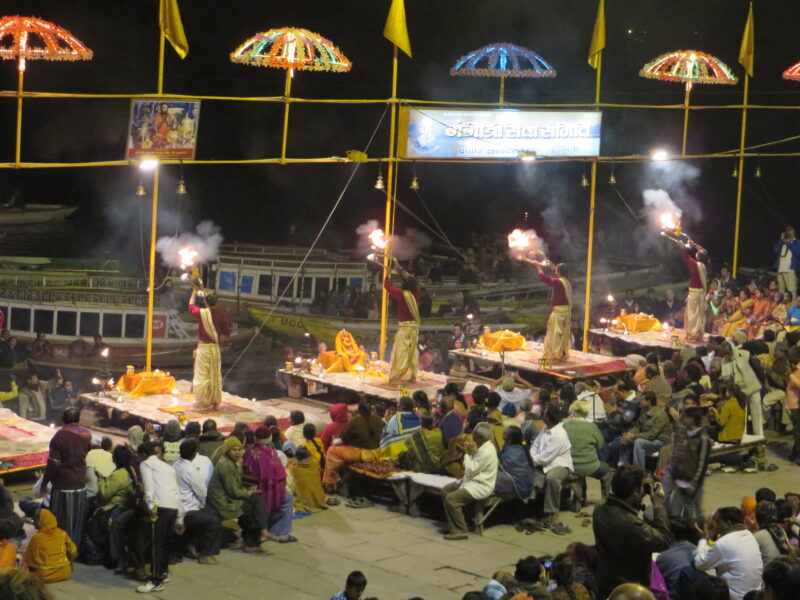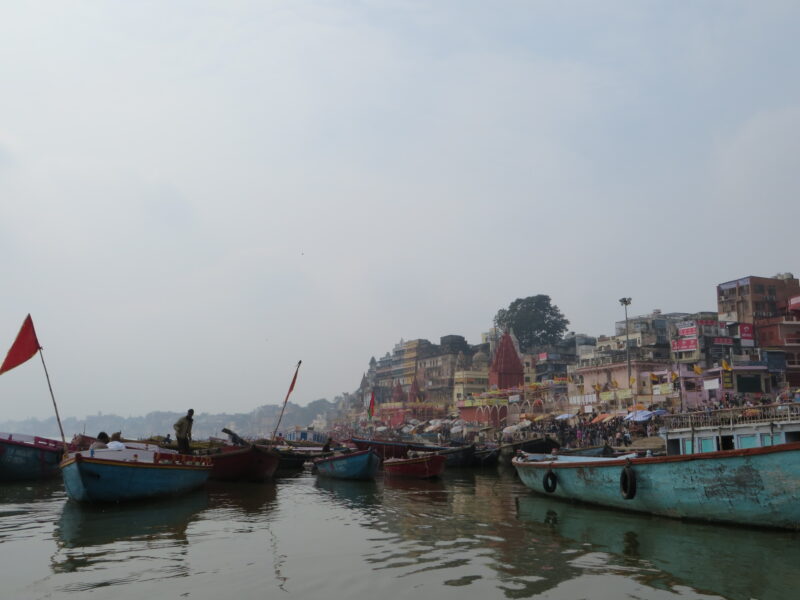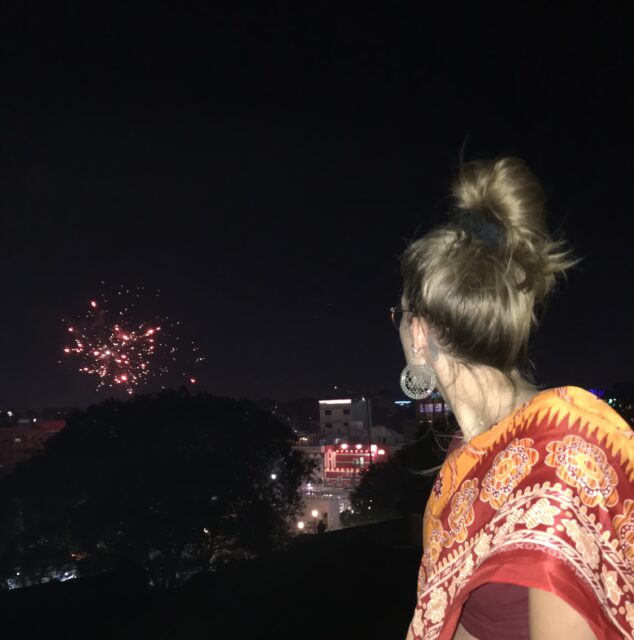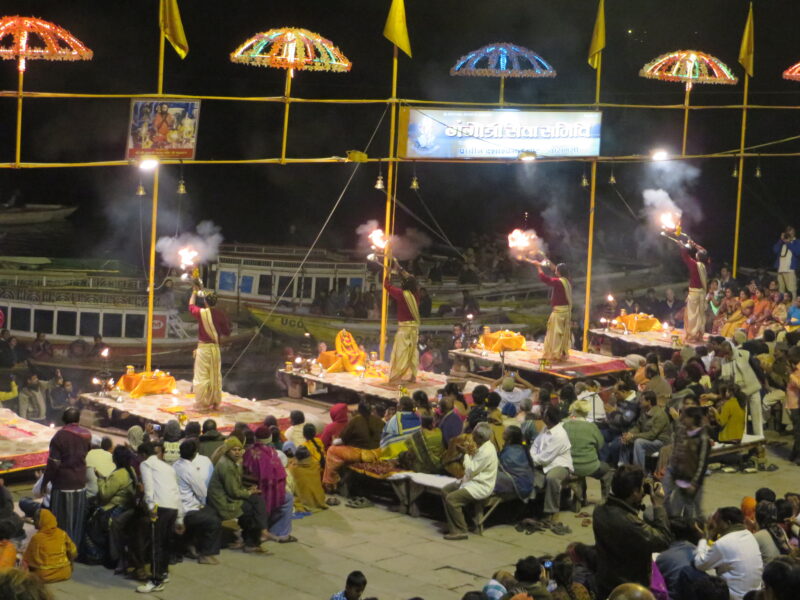Phil Lagace’s travel blog

As with the last two installments, this entry sees me (Phil Lagace from the Religion Department) and my partner Aurélie updating readers on our travels throughout South Asia. In the last piece, I described some Indigenous practices of the Khasi people that remain alive in India’s northeastern state of Meghalaya. Following our stay in the Indian northeast, we travelled west across Nepal before making our way southward to Varanasi for its Diwali festivities.

Varanasi is unanimously heralded as one of India’s most sacred locations by its Hindu population. For various reasons, millions of people make the pilgrimage to the city each year. One major draw involves the understanding that passing away in Varanasi aids one in liberation from the cycle of rebirth, an ultimate goal for devout Hindus. As such, Varanasi is home to India’s most famous cremation grounds which are positioned alongside its holiest of rivers, the Ganges. However, the aforementioned emphasis on death is perhaps matched by the lively exuberance seen elsewhere down its banks. There is a near-constant stream of people descending down staircases to riverside platforms, known as ghats, from which people enter the waters for a ritual dip; for to bathe in the Ganges is to purify oneself of misdeeds.
Yet the liveliness of Varanasi is no doubt ramped up during Diwali, also known as the “festival of lights.” Diwali is often framed as commemorating the victory of good over evil and of light over darkness. Accordingly, the city is brightened by colourful designs fashioned on the ground, known as rangoli, and countless little lamps throughout the five-day celebration. The third day of the festival coincides with Lakṣmī Pūjā, a celebration centering on the goddess of fortune. It is the night of Lakṣmī Pūjā, though, that sees Diwali reach its peak of visual brilliance.
At its nightfall, Aurélie and I went to the Ganges and boarded a boat so that we could get a good view of the ārtī ceremony, a devotional undertaking wherein lamps are circularly waved in front of a divine presence (the Ganges in this case). At the conclusion of this ceremony, the scores of people in attendance slowly dispersed to take in the ensuing frenzy. Fortunately for us, we were staying with a friend and were able to station ourselves on his household rooftop. From there, we watched for hours as the moonless sky became peppered with celebratory fireworks. After some time, we decided to venture into the streets below which were apparently just as explosive. Children were running amok and setting off deafening firecrackers in the echoing alleyways near our quarters. Having got a proper sense of what the night would entail, and opting to protect our hearing, Aurelie and I turned in after a foray into the roadways. Surprisingly, drifting off was easy as the pops and bangs of Diwali carried on.

That’s it for this entry! There won’t be any more newsletters this term. However, my travels will continue; I’m now stationed in the southernmost state of India, Tamil Nadu, conducting more of my doctoral research. There’s a chance I may provide some additional retroactive pieces next term, but in case I don’t – thank you to those who have read any of this travel blog thus far, and I wish you the best for the coming break!



